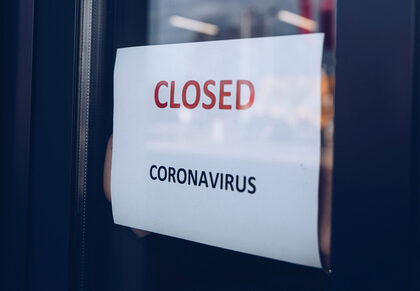Activists from Colorado’s “keep it in the ground” movement—a group opposing any production of natural resources—are suggesting that “stay at home” orders provide the perfect opportunity to “imagine our world” after the coronavirus pandemic ends.
They reason that people have now learned to drive less, travel less, and use public transit more, so we should just keep many roads and facilities closed once the pandemic has passed. Now that people have learned to work from home, we should force them to reduce their daily commuting permanently, they say.
I imagine a little different outcome, once people no longer have to “shelter in place” under orders from the Great and Powerful Oz. I am thinking of a return to normalcy—or whatever passes for normal in this brave new world.
Americans are resilient and highly adaptive. They adopt new technologies and new ways of thinking very quickly. Yet there is such a thing as “change fatigue,” the sense of apathy people sometimes develop in the face of change that is too rapid, or more often, a whole series of failed or problematic changes.
Change fatigue is a form of low morale, and the result is usually a resistance to further change. It is common in government and corporate organizations, and it happens in offices frequently. It can happen to an entire country, too.
Americans experienced it after World War I, which came on the heels of nearly 20 years of rapid expansion of government during the Progressive Era. The war engulfed more than 70 million military personnel worldwide, resulted in 21 million deaths, and forever ended America’s isolation from European conflicts. It also resulted in the global Influenza pandemic that infected a third of the world’s population and killed upwards of 50 million people.
When Warren Harding’s campaign in 1920 promised a “Return to Normalcy,” it was exactly what people craved. History remembers the scandals of his administration (especially in the Interior Department), but it has mostly forgotten his campaign. Harding won one of history’s biggest landslide victories, a nearly 2-1 margin in the popular vote (60.3 to 34.1 percent) and more than 3-1 in the Electoral College (404 to 127). People wanted things to get back to normal, whatever that meant at the time, and his campaign theme was exactly what voters wanted and needed to hear.
Liberal politicians are continuously aware of the famous advice of Rahm Emanuel (an Illinois congressman and later White House chief of staff and mayor of Chicago): “Never allow a good crisis go to waste. It’s an opportunity to do the things you once thought were impossible.” What a golden opportunity, while people seem panicked, to implement far-reaching policies under the guise of public health and safety—policies people would never accept in more “normal” times.
It should be completely predictable that activists would use the pandemic, and the public’s acquiescence in what amounts to martial law, to make changes that will far outlast the virus. Shutting down oil and gas production, closing roads, and eliminating airplanes and beef (as the Green New Deal suggests), for starters.
Sure enough, several groups, including the Sierra Club, EarthJustice, and WildEarth Guardians, have circulated petitions calling on Gov. Jared Polis of Colorado to stop construction on I-70 in the state and halt energy development—which they know he already wants to do—until the pandemic is “contained.”
The activists provide no explanation of what oil and gas production have to do with containing the virus, and we do know what would happen to medical supplies and hospital systems without it. But still, never let a “good crisis” go to waste.
Is there such a thing as a good crisis? For radicals who want to “fundamentally transform America,” absolutely.
Some of these activists are citing a Harvard “study,” already discredited by most scientists, claiming a link between COVID-19 deaths and exposure to air pollution. The numbers turned out to be wrong, and now even the author says lawmakers should not base policy decisions on the report.
In fact, the report is reminiscent of the centuries of medical science when doctors believed illnesses were caused by “foul air” and could not be transmitted from one person to another. Thanks to the invention of the microscope, we now know about bacteria and viruses and how they spread. (Hint: not by foul air.)
One should not blame sophisticated and well-funded activists for wanting to use the current situation to push their agenda, however far-fetched any connection may seem.
My guess, however, is that far more people just want to put this entire tragic episode behind them, and leaders who imagine a return to normalcy will win the hearts and minds of the public.
